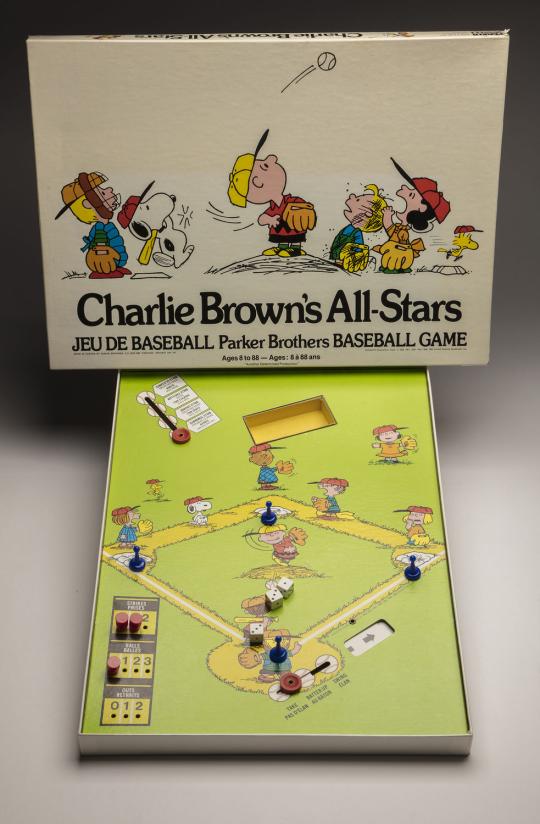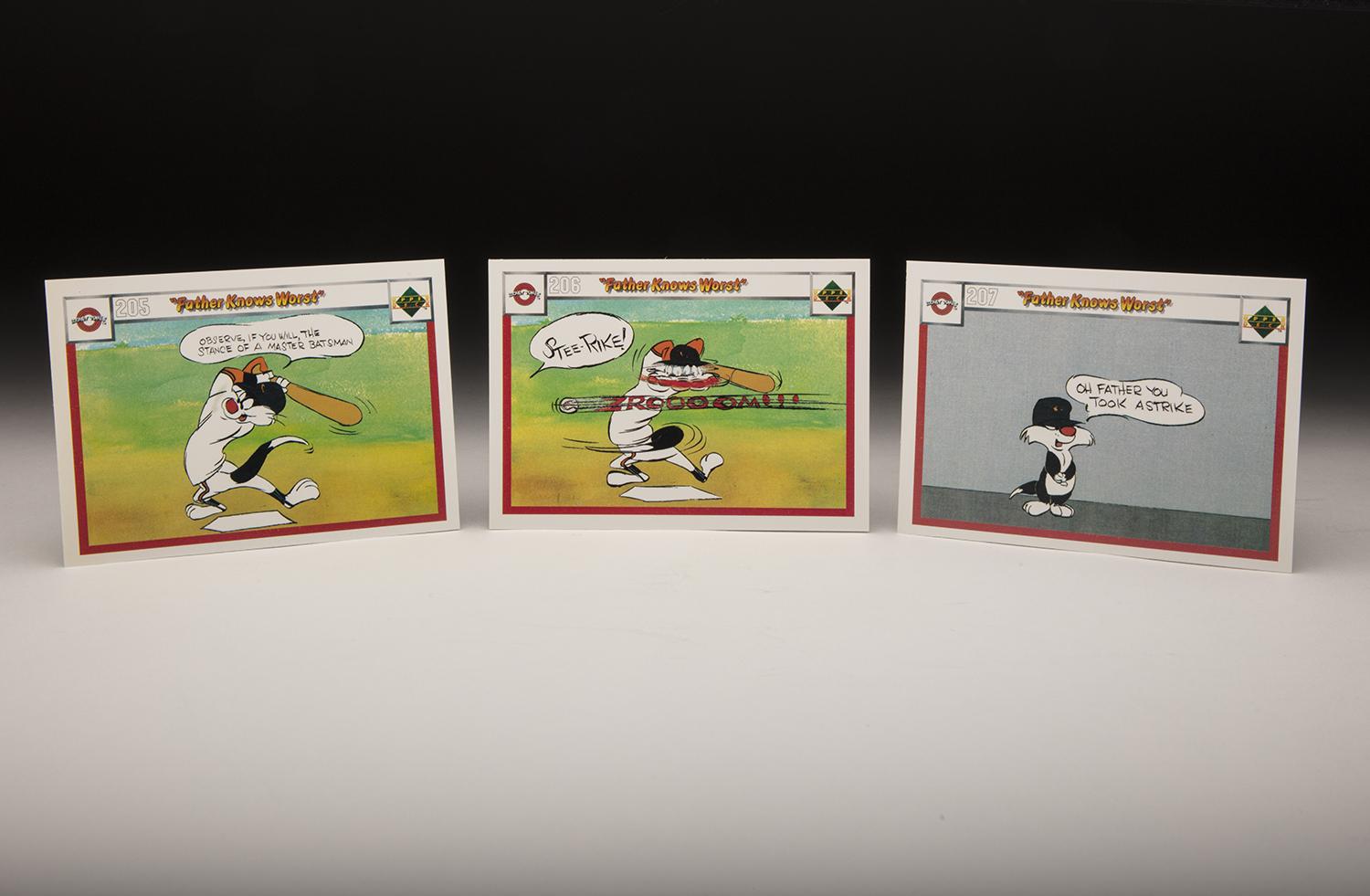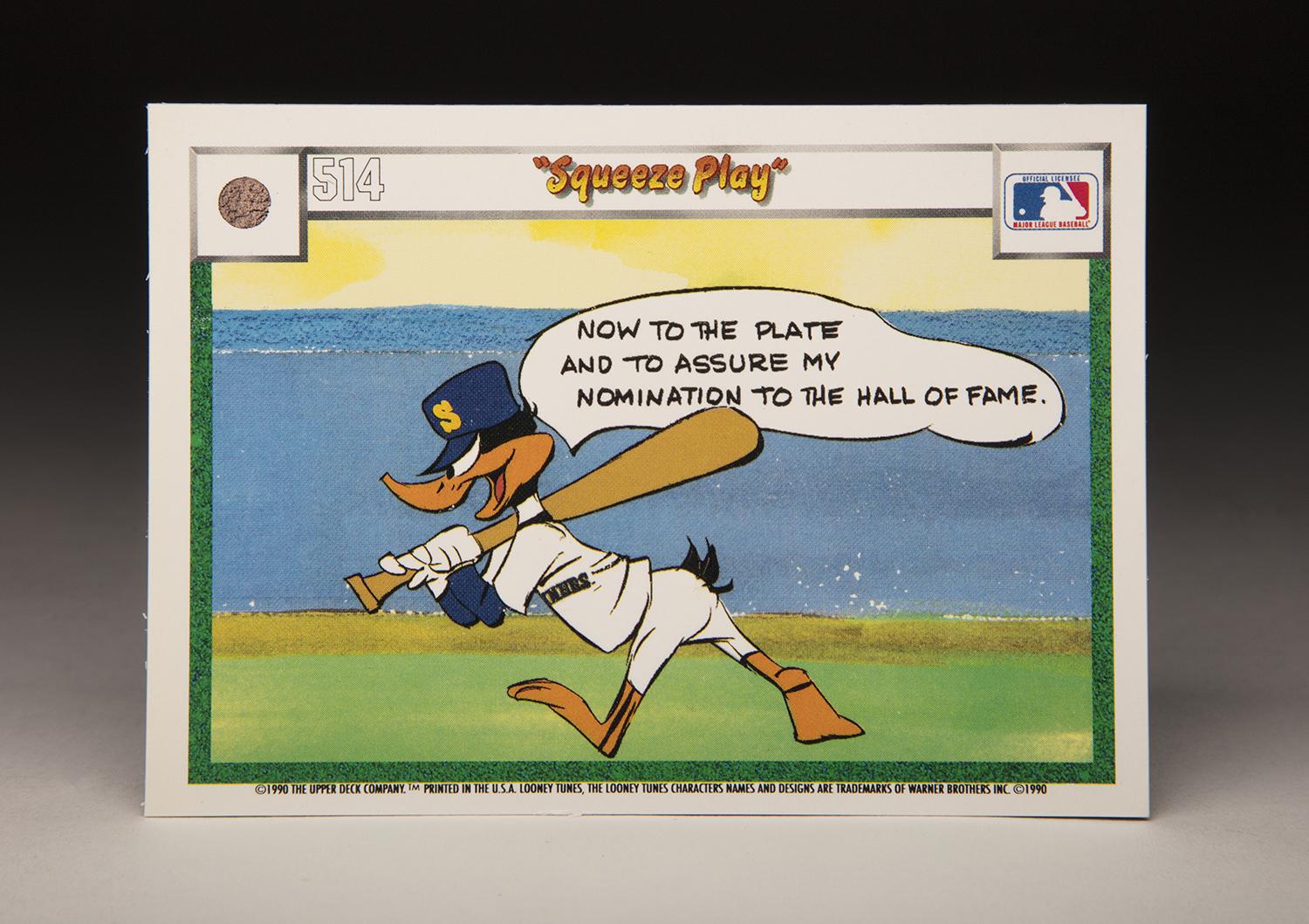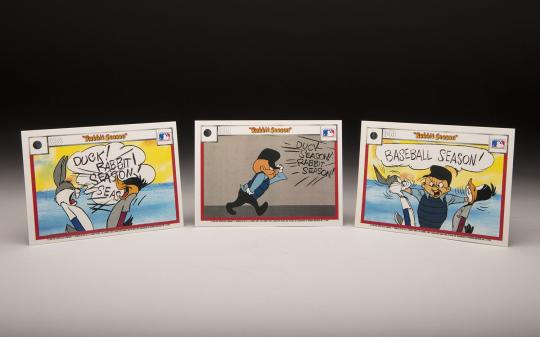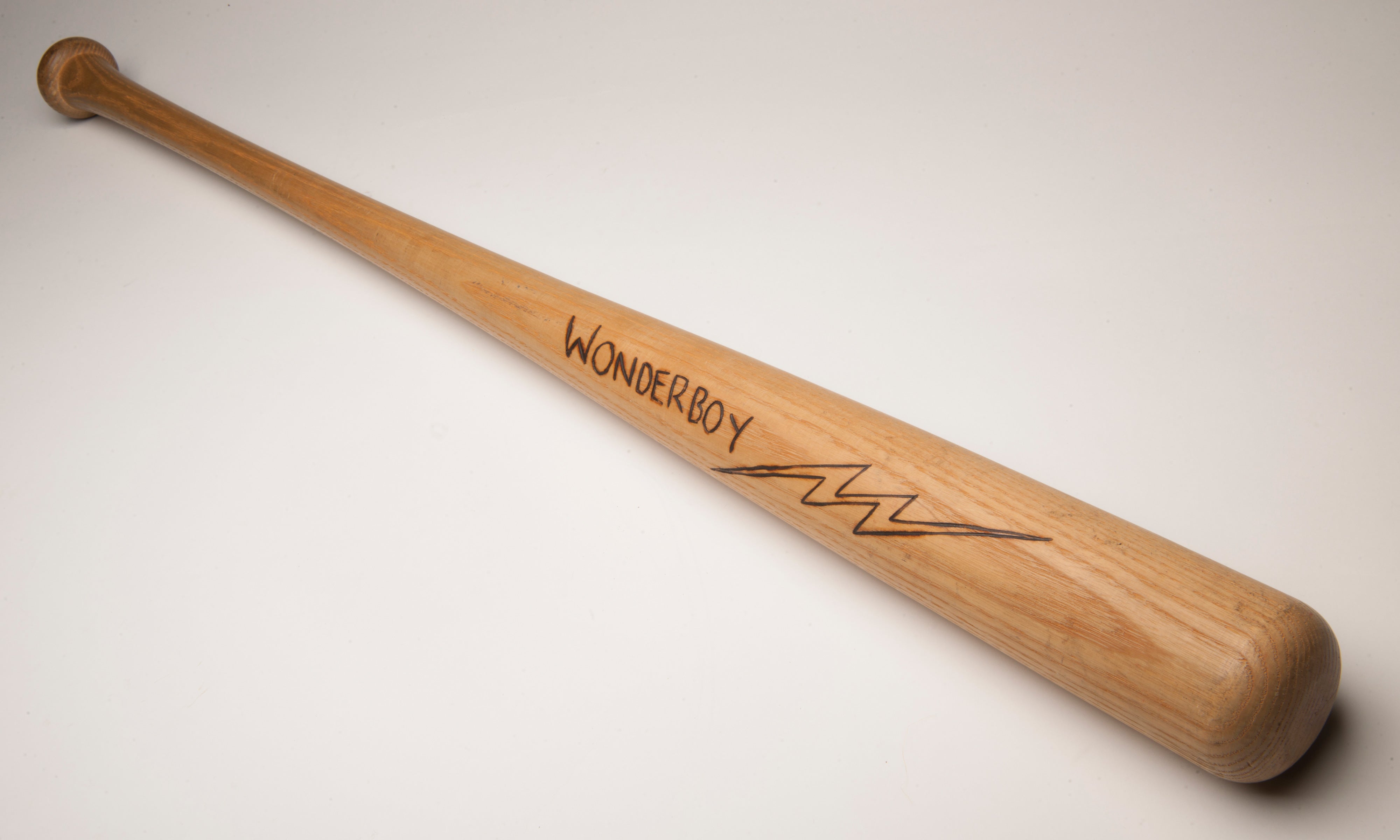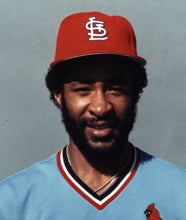- Home
- Our Stories
- #Shortstops: Baseball cartoons tell story of the game’s popularity
#Shortstops: Baseball cartoons tell story of the game’s popularity
It is not uncommon to see a certain level of animation – on the faces of the players – on any given day at the ballpark. Picture George Brett’s reaction to his 1983 home run being overturned due to the amount of pine tar on his bat, for example.
But it’s also not uncommon to find baseball drawn, colored, and animated, in one of numerous cartoons which have appeared on television. The Baseball Hall of Fame Library contains copies of many of those in its collection.
“Animated cartoons on television have long been popular, and it’s no surprise that many incorporate baseball,” said Jim Gates, library director at the Hall of Fame. “Whether it’s Looney Tunes or Charlie Brown, they appeal to a wide audience, and we try to find and collect as many as we can.”
One of the most well-known animations featuring baseball is the “Homer at the Bat” episode of THE SIMPSONS. In order to win the championship, Springfield Nuclear Power Plant’s softball team is replaced by ringers from Major League Baseball, including future Hall of Famers Wade Boggs, Ken Griffey, Jr., and Ozzie Smith. But it is up the regulars to win the game when most of the major leaguers are beset by calamity. Homer Simpson pinch hits for Darryl Strawberry – the only one of the ringers to play in the game – and gets hit in the head with the bases loaded to bring in the championship-winning run.
This Peantus-themed board game is a spin-off of the "Charlie Brown All-Stars" television special. In 2000, the Museum honored Peanuts cartoonist Charles Schulz by displaying many of his original comic strips and artifacts related to the show. (Milo Stewart Jr. / National Baseball Hall of Fame)
Hall of Fame Membership
There is no simpler, and more essential, way to demonstrate your support than to sign on as a Museum Member.
A VHS cassette tape and signed copy of the episode’s script are in Cooperstown, and the episode’s 25th anniversary will be celebrated prior to the Hall of Fame Classic, Saturday, May 27. That morning, a roundtable discussion featuring various producers and directors from the episode will take place outside the Library entrance in Cooper Park. A SIMPSONS-themed exhibit will also open in the Museum, and the program will be honored prior to the afternoon’s game at Doubleday Field.
This will not be the first time that the Hall of Fame has had an exhibit featuring animated cartoons. In 2000, the Hall honored the late cartoonist Charles Schulz by displaying many of his original comic strips; it is estimated that about 10 percent of his roughly 18,000 total strips used baseball as the subject. Patrons could also watch Peanuts television specials such as “Charlie Brown’s All-Stars” and “It’s Spring Training, Charlie Brown,” both of which are represented with copies in the Hall’s collection.
“I could draw baseball strips every day,” noted Schulz in a 1999 interview. Schulz, who hailed from northern California, made sure that Charlie Brown was a San Francisco Giants fan.
Warner Brothers also employed baseball in numerous Looney Tunes and Merrie Melodies cartoons, including 1946’s “Baseball Bugs,” where Bugs Bunny plays all nine positions at once against the Gashouse Gorillas. Foghorn Leghorn was involved in another animated short, 1954’s “Little Boy Boo,” where he attempted to teach baseball to a youngster, only to discover he was the one being schooled.
Hall of Famers also made their way into other animated features. The Library has a copy of “Willie Mays and the Say Hey Kid,” an hour-long 1972 film that was part of The ABC Saturday Superstar Movie. Mays becomes a cartoon when making a difficult catch to help the Giants win the pennant, and it is learned that he is the godfather of an orphan girl he cares for.
As part of The New Casper Cartoon Show, 1961’s “Abner the Baseball” was an animated feature about a baseball named Abner who tells the story of how he ended up at the Baseball Hall of Fame, thanks to an animated Mickey Mantle. The cartoon Mantle hits Abner longer than any other home run ball – 987 feet, as an animated Yogi Berra writes on a chalkboard – earning his ticket to Cooperstown, where he is shown next to baseballs hit by other Hall of Famers, such as Babe Ruth and Ted Williams.
“While largely meant for consumption by kids on a Saturday morning, these cartoons stand the test of time and are important to show how baseball intersects with – and is woven into – popular culture,” Gates said. “And they can still get people laughing and chuckling all these years later.”
Matt Rothenberg is a freelance writer from Ossining, N.Y.

